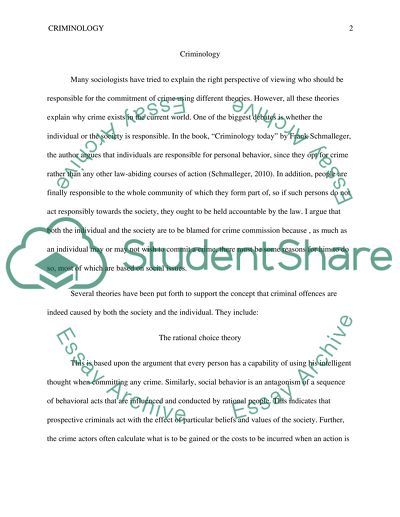Criminology Essay Example | Topics and Well Written Essays - 750 words. Retrieved from https://studentshare.org/sociology/1461647-criminology
Criminology Essay Example | Topics and Well Written Essays - 750 Words. https://studentshare.org/sociology/1461647-criminology.


